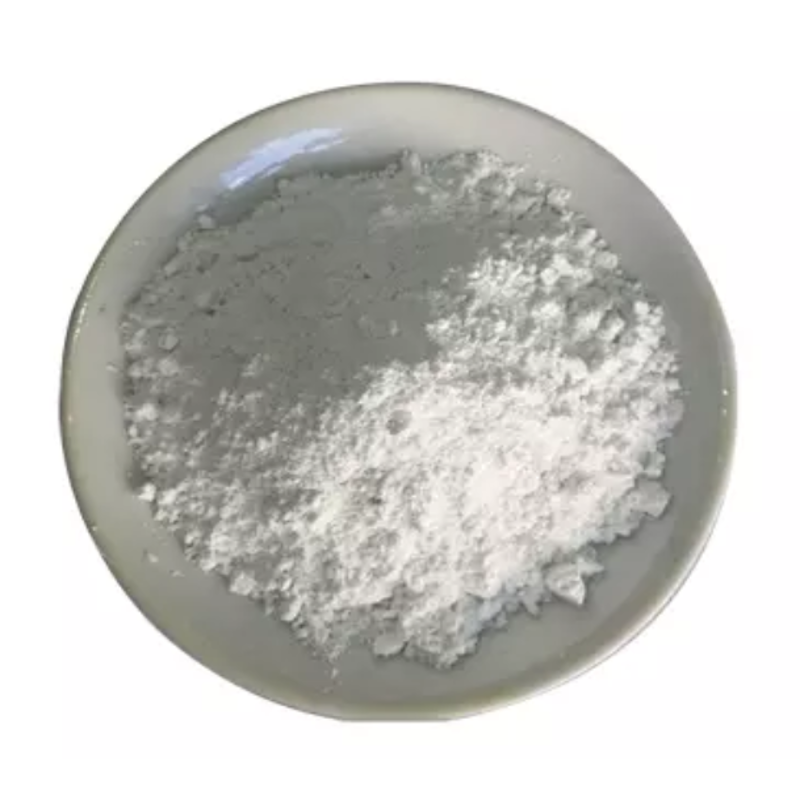Use, storage and storage of enzymes
-
Last Update: 2020-07-02
-
Source: Internet
-
Author: User
Search more information of high quality chemicals, good prices and reliable suppliers, visit
www.echemi.com
1, the source of the enzymethe source of MkTenzyme preparations are obtained by the animals and plants rich in active bioenzymes, such as the extraction of trypsin in animal pancreas, and the extraction of beta-amylase in barleyThe second is obtained by the industrialization culture of microorganisms, which is the main way to obtain enzyme preparations in modern enzyme engineeringMkT
2The industrial production of microbial enzymesMkTthe industrial production of microbial enzymes mainly uses liquid deep culture dysethsMkT
3, the use of enzyme preparations, storage and storageMkT3.1, the use of enzymes:MkTthe use of good enzyme preparations, to play its maximum catalytic efficacy of the basis is to affect the main factors affecting the enzyme reaction has a full understandingThese factors mainly refer to: enzyme-induced reaction system of substrate concentration, enzyme concentration, actuators, inhibitors, temperature, pH, action time and so onMkT
Bottom concentration: in industrial production, in order to save costs, shorten the time, generally with excess substrate in a short period of time to achieve the maximum reaction speedMkT
Enzyme concentration: It can be seen from the enzyme-induced reaction E-S ES-E-P that the concentration of product P is determined by the concentration of the intermediate product ES, the higher the concentration of ES, the faster the reaction rateMkT
When the substrate is present in large quantities, the concentration of the intermediate product ES depends on the concentration of the enzymeThe more enzyme molecules there are, the more the substrate is converted into products, i.ethe conversion of the substrate increases with the increase of enzyme concentrationMkT
The formula available through the Mis equation is as follows: u-d(S)/dt-K-E
MkT -type: MkT u-reaction speed MkT -E-Enzyme concentration MkT K-Speed Constant MkT -S- The concentration of mkT-
-
-MkT-mk-
-MkT-m.-m.-
-m.-m.-
-mk T-mkT-m.-m.-m.-m-
t-m-t-m-t-concentration-mk-t-
-m-m-t-concentration.- MkT
Activator: An activator is a substance that enables enzymes to perform their catalytic activities efficiently, but not every enzyme needs an auxiliary act of the activator MkT
Inhibitor inhibitors are substances that can cause the speed of catalytic reaction to decrease The causes of inhibition are: a reaction with a catalyst to produce a catalyst-inhibitor complex, and a reaction with one of the reactants MkT
In general, heavy metal ions are inhibitors of almost all enzymes MkT
In production, special needs to be paid to the effects of inhibitors on enzymes, especially the energy inhibition of enzymes produced by the materials of parts or parts of the equipment MkT
Temperature: Temperature affects enzymes in two ways: one is that increasing temperature accelerates the catalytic reaction In general, the reaction rate increases by 1-2 times for every 10 degrees C increase in temperature Second, when the temperature rises to the enzyme's denaturation temperature, the enzyme degeneration process is completed At higher temperatures, the enzyme's degeneration and enzyme's reaction speed are accelerated at the same time, and this degeneration is irreversible Enzymes at low temperatures are only slow catalytic reaction speed, even slow to not be aware, but by no means is not effective, so generally can use low temperature refrigeration technology to protect enzyme preparations, because the color of enzymes at low temperatures is very small In production, the temperature range provided by the process should be the optimum temperature of the enzyme MkT
pH: pH has a great effect on the vitality of enzymes Some enzymes have a wide pH range and can play a role in a wider environment, while others have a narrow pH range that can only be adapted to a relatively strict control environment Enzyme sensitivity to pH is higher than temperature, generally at a lower temperature, the enzyme's vitality is small, at high temperatures, there are some instantaneous vitality, but for pH, when pH is not within the applicable range of enzymes, the enzyme can lose all vitality Ph is irreversible for enzyme degeneration Therefore, pH should be strictly controlled MkT
Effect time: In general, it is considered that the action time of enzyme is negatively correlated with the use of enzyme MkT
3.2, safekeeping and storage MkT the essence of the enzyme preparation is a protein, so can cause protein damage or degeneration factors will cause damage to the enzyme preparation Therefore, any concentration of acids, alkalis, salt solutions or radiation, heating will cause the enzyme composition changes, so that the enzyme preparation is inactive, and this damage is irreversible Where conditions are available, enzymes should be stored in a clean, dry cold storage to avoid sunlight and wind and rain Enzymes should not be placed in an open state so that they absorb moisture and deteriorate MkT 1, the source of the enzyme the source of the MkT enzyme preparation is obtained by extracting from animals and plants rich in active bioenzyme, such as the extraction of trypsin in animal pancreas, and the extraction of beta-amylase in barley The second is obtained by the industrialization culture of microorganisms, which is the main way to obtain enzyme preparations in modern enzyme engineering MkT
2 The industrial production of microbial enzymes MkT the industrial production of microbial enzymes mainly uses liquid deep culture dyseths MkT
3, the use of enzyme preparations, storage and storage MkT 3.1, the use of enzymes: MkT the use of good enzyme preparations, to play its maximum catalytic efficacy of the basis is to affect the main factors affecting the enzyme reaction has a full understanding These factors mainly refer to: enzyme-induced reaction system of substrate concentration, enzyme concentration, actuators, inhibitors, temperature, pH, action time and so on MkT
Bottom concentration: in industrial production, in order to save costs, shorten the time, generally with excess substrate in a short period of time to achieve the maximum reaction speed MkT
Enzyme concentration: It can be seen from the enzyme-induced reaction E-S ES-E-P that the concentration of product P is determined by the concentration of the intermediate product ES, the higher the concentration of ES, the faster the reaction rate MkT
When the substrate is present in large quantities, the concentration of the intermediate product ES depends on the concentration of the enzyme The more enzyme molecules there are, the more the substrate is converted into products, i.e the conversion of the substrate increases with the increase of enzyme concentration MkT
The formula available through the Mis equation is as follows: u-d(S)/dt-K-E
MkT -type: MkT u-reaction speed MkT -E-Enzyme concentration MkT K-Speed Constant MkT -S- The concentration of mkT-
-
-MkT-mk-
-MkT-m.-m.-
-m.-m.-
-mk T-mkT-m.-m.-m.-m-
t-m-t-m-t-concentration-mk-t-
-m-m-t-concentration.- MkT
Activator: An activator is a substance that enables enzymes to perform their catalytic activities efficiently, but not every enzyme needs an auxiliary act of the activator MkT
Inhibitor inhibitors are substances that can cause the speed of catalytic reaction to decrease The causes of inhibition are: a reaction with a catalyst to produce a catalyst-inhibitor complex, and a reaction with one of the reactants MkT
In general, heavy metal ions are inhibitors of almost all enzymes MkT
In production, special needs to be paid to the effects of inhibitors on enzymes, especially the energy inhibition of enzymes produced by the materials of parts or parts of the equipment MkT
Temperature: Temperature affects enzymes in two ways: one is that increasing temperature accelerates the catalytic reaction In general, the reaction rate increases by 1-2 times for every 10 degrees C increase in temperature Second, when the temperature rises to the enzyme's denaturation temperature, the enzyme degeneration process is completed At higher temperatures, the enzyme's degeneration and enzyme's reaction speed are accelerated at the same time, and this degeneration is irreversible Enzymes at low temperatures are only slow catalytic reaction speed, even slow to not be aware, but by no means is not effective, so generally can use low temperature refrigeration technology to protect enzyme preparations, because the color of enzymes at low temperatures is very small In production, the temperature range provided by the process should be the optimum temperature of the enzyme MkT
pH: pH has a great effect on the vitality of enzymes Some enzymes have a wide pH range and can play a role in a wider environment, while others have a narrow pH range that can only be adapted to a relatively strict control environment Enzyme sensitivity to pH is higher than temperature, generally at a lower temperature, the enzyme's vitality is small, at high temperatures, there are some instantaneous vitality, but for pH, when pH is not within the applicable range of enzymes, the enzyme can lose all vitality Ph is irreversible for enzyme degeneration Therefore, pH should be strictly controlled MkT
Effect time: In general, it is considered that the action time of enzyme is negatively correlated with the use of enzyme MkT
3.2, safekeeping and storage MkT the essence of the enzyme preparation is a protein, so can cause protein damage or degeneration factors will cause damage to the enzyme preparation Therefore, any concentration of acids, alkalis, salt solutions or radiation, heating will cause the enzyme composition changes, so that the enzyme preparation is inactive, and this damage is irreversible Where conditions are available, enzymes should be stored in a clean, dry cold storage to avoid sunlight and wind and rain Enzymes should not be placed in an open state so that they absorb moisture and deteriorate MkT
This article is an English version of an article which is originally in the Chinese language on echemi.com and is provided for information purposes only.
This website makes no representation or warranty of any kind, either expressed or implied, as to the accuracy, completeness ownership or reliability of
the article or any translations thereof. If you have any concerns or complaints relating to the article, please send an email, providing a detailed
description of the concern or complaint, to
service@echemi.com. A staff member will contact you within 5 working days. Once verified, infringing content
will be removed immediately.







